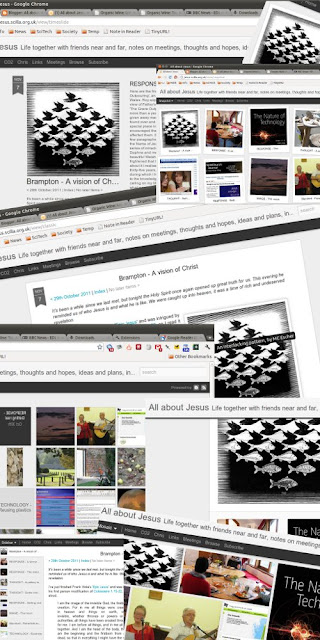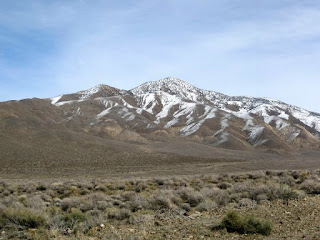< No earlier items | Index | Dry bones in the valley >
For much of my life Ezekiel's words about the valley of dry bones have seemed highly significant. I now feel I should work through the passage in detail here. I'll take it verse by verse and we'll see what it has to say to us today.
 First, a little background; Ezekiel saw the valley in a vision, as part of a series of visions. Right at the beginning of the first chapter he gives us the details.
First, a little background; Ezekiel saw the valley in a vision, as part of a series of visions. Right at the beginning of the first chapter he gives us the details.'In the thirtieth year, in the fourth month on the fifth day, while I was among the exiles by the Kebar River, the heavens were opened and I saw visions of God.'
'On the fifth of the month — it was the fifth year of the exile of King Jehoiachin — the word of Yahweh came to Ezekiel the priest, the son of Buzi, by the Kebar River in the land of the Babylonians.'
'There the hand of Yahweh was upon him. I looked, and I saw...' (Ezekiel 1:1-4)
Living in exile - There are several things to notice right away. Ezekiel was an exile from the promised land and was among other exiles. In other words he was not alone, but along with others he was not where he truly belonged. Worldly powers had taken them far from the land of their inheritance. But Ezekiel was a Jew and of a priestly family, that personal inheritance could never be taken from him.
Is that true for us? Have we, the church (or at least the western church) been taken far from our true and full inheritance in Christ? I'm not talking about salvation here. Nor do I mean our individual lives in Christ and he in us. Those cannot be taken. I mean the life of the church.
The Almighty has permitted us to be captured by all kinds of worldly attraction and methodology. We have replaced falling on our faces in the presence of his glory and power with worship bands. We have replaced going in the name of Yahshua (Jesus) with outreach initiatives. We've replaced sitting at his feet, hearing him speak and watching him work with training sessions. We've replaced loving our neighbour with leaflets through doors.
Of course all these things have their place and all are useful - worship bands, outreach initiatives, training sessions and attractive leaflets are not bad in and of themselves. But they should not and cannot replace his glory and power, going in his name, listening and watching him or loving our neighbour.
But all is not lost! - As an exile from the land of promise, Ezekiel was by the river when the heavens were opened and he saw visions of (or from) the Most High. Do you think that might be true for us too? Is it possible that in the middle of this foreign place we have been taken to, the heavens might be opened and we might truly see the Most High? Notice what he says at the start of verse 4 - the hand of Yahweh was on me. I looked and I saw.
Is his hand not also on us? If we look, we too, will see. But we surely won't see unless we look! I'm determined to look. Are you? King David wrote, 'Taste and see that Yahweh is good'. (Psalm 34:8) We need to look, listen, and taste. What does this mean? Simply this - it's time to check Papa out, it's time to hear what he is saying, see what he is doing, and taste the flavour of his nature and love. We will not be disappointed!
We haven't even started on the dry bones passage yet, but we have set the scene. We know that even if we are in exile the Master can reach us with a new vision, that he can touch us, and that we are free to look and see. Are you up for this?
Next time we'll look at those dry bones - I promise!
< No earlier items | Index | Dry bones in the valley >






